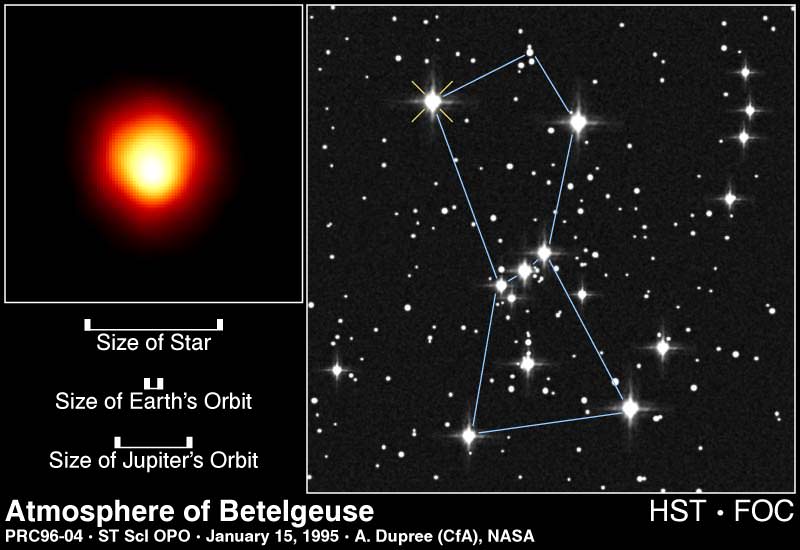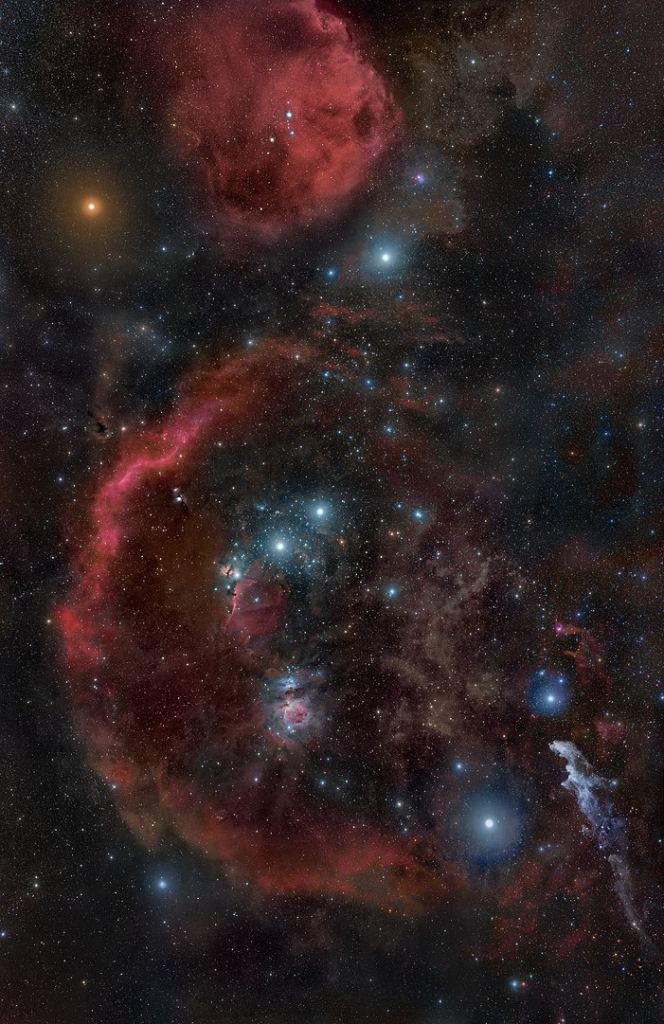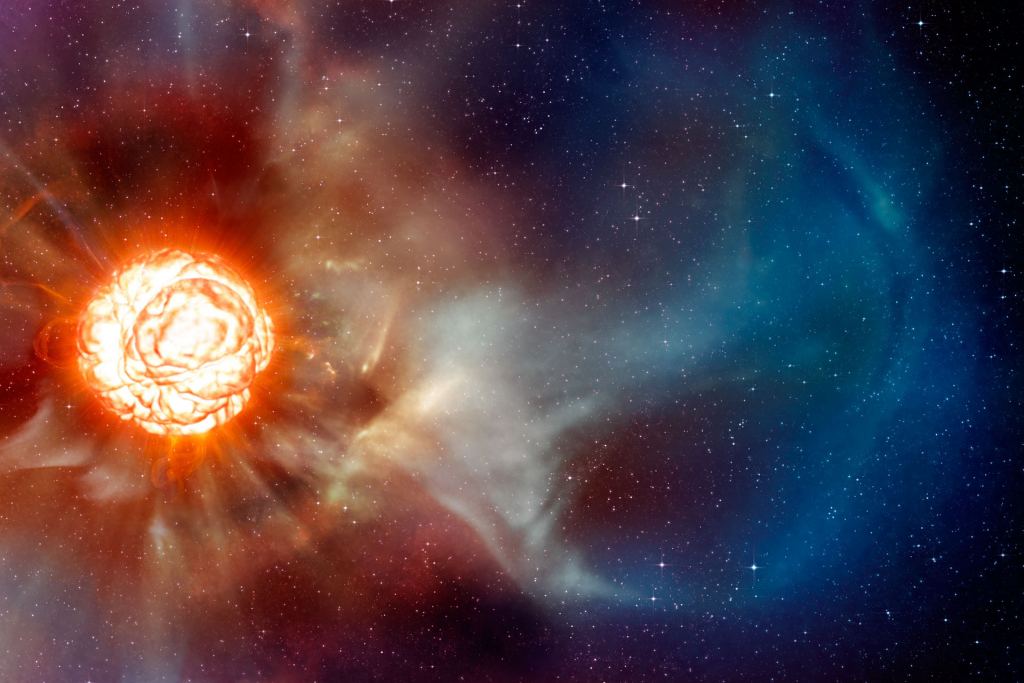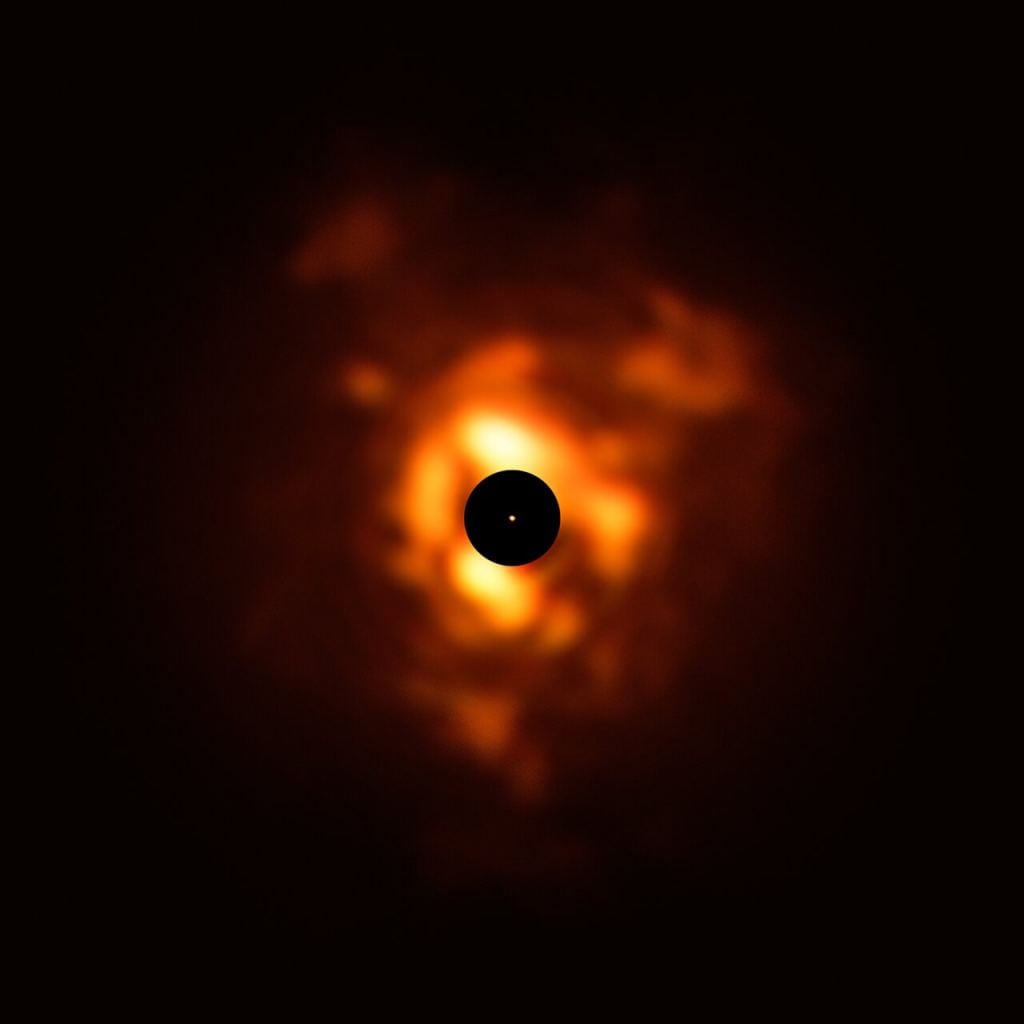A few months ago we all watched as Betelgeuse dimmed. Between October 2019 and 22nd of February 2020 the star's brightness dropped by a factor of about three. It went from magnitude 0.5, and from being the tenth-brightest star in the sky, to magnitude 1.7.
Naturally, we all wondered what was happening. Would it go supernova? Even though that was extremely unlikely, how could we help but wonder?
A new study suggests a more prosaic explanation for Betelgeuse's behaviour. Instead of an imminent supernova, it's simple starspots that are creating the dimming.
The new study is titled " Betelgeuse Fainter in the Submillimeter Too: An Analysis of JCMT and APEX Monitoring during the Recent Optical Minimum." The lead author is Thavisha Dharmawardena of the Max Planck Institute for Astronomy. The paper is published in The Astrophysical Journal Letters.
After its pronounced decline in brightness, Betelgeuse returned to form. By February 25th, it had started brightening again. Restless scientists got busy, and started gathering observational data and trying to piece together what had happened. In March 2020, two astronomers published their latest work, showing that it was simply dust that led to Betelgeuse's dimming.
Emily Levesque from the University of Washington was one of those scientists. In a press release announcing their work, she said "We see this all the time in red supergiants, and it's a normal part of their life cycle. Red supergiants will occasionally shed material from their surfaces, which will condense around the star as dust. As it cools and dissipates, the dust grains will absorb some of the light heading toward us and block our view."
Red supergiants like Betelgeuse become unstable in their old age. Since they've burned so much of their fuel, the resulting loss of mass means a loss of self-gravity that holds these stars together. They can pulsate, and those pulsations are on a timescale of hundreds or even thousands of days. We see those pulsations as changes in brightness.
Since the gravity on the surface of the star has weakened in its old age, those pulsations can eject the outer layer of the star into space pretty easily. That cast-off material turns to dust, and this is what led to the previous explanation for Betelgeuse's dimming.
Red supergiants like Betelgeuse are very dynamic stars, so nothing about this dimming should be surprising. But it can still take a lot of work to figure out what's going on with them. The question of Betelgeuse's dimming didn't end with Levesque's study.
In this new study, the researchers looked at 13 years of observational data from Betelgeuse. The study presents sub-millimeter observations from the James Clerk Maxwell Telescope and the Atacama Pathfinder Experiment (APEX). All that data shows that Betelgeuse has experienced other episodes of dimming. The current dimming was observed in optical light, and was more pronounced than the previous ones. But the previous episodes still saw the star dim by 20%, though in longer wavelengths.
In this new research, Dharmawardena and the other authors started by testing the dust hypothesis.
Rather than optical light, they looked at longer wavelength data. That's because while optical light is blocked by dust, longer wavelengths can still penetrate. Betelgeuse was still dimmer in the longer wavelengths, which is incompatible with the presence of dust. Something else must be causing it.
"What surprised us was that Betelgeuse turned 20% darker even in the submillimetre wave range," reports Steve Mairs from the East Asian Observatory, who collaborated on the study.
The team of researchers wanted to dig deeper. They took the spectral range they were observing Betelgeuse in, and calculated how much influence dust would have on their measurements. In their sub-millimeter observational range, it turns out that the dimming cannot be explained by dust. So if the dimming wasn't caused by intervening dust, they surmised, it must be caused by the star itself.
The authors wrote in their study that "Radiative-transfer modeling shows that this cannot be caused by changes in the dust envelope, and therefore must reflect a change in the photosphere of the star."
The team of researchers say that large starspots in Betelgeuse's photosphere are responsible for the dimming. They say that the spots are so large that they cover 50 to 70% of the star's surface. Those are gigantic, and are enough to cause Betelgeuse to dim.
"Towards the end of their lives, stars become red giants," lead author Dharmawardena explained in a press release. "As their fuel supply runs out, the processes change by which the stars release energy."
To understand what's happening here, we have to dig into some astrophysical principles.
A star's luminosity depends on a couple things: its diameter, and more importantly, its surface temperature. If a star's diameter increases, but not its temperature, the luminosity will decrease evenly across all wavelengths. But if the temperature changes, then the luminosity doesn't increase evenly across all wavelengths.
Since Betelgeuse's dimming was not the same in visible light and in sub-millimeter light, that means that the surface temperature has to be changing. They say that the dimming is the result of the star's temperature decreasing by about 200 C (392 F.)
But that doesn't mean that the reduction in temperature was even all across the surface of the aging star. And this led to the starspots.
"However, an asymmetric temperature distribution is more likely," explained co-author Peter Scicluna from the European Southern Observatory (ESO). "Corresponding high-resolution images of Betelgeuse from December 2019 show areas of varying brightness. Together with our result, this is a clear indication of huge star spots covering between 50 and 70% of the visible surface and having a lower temperature than the brighter photosphere."
Betelgeuse is a well-studied star, but this just goes to show us that it's still full of surprises. Our Sun experiences sunspot activity on an 11-year cycle. Scientists don't yet know if red supergiants like Betelgeuse go through a similar cycle. Its previous brightness minimum was also much more pronounced than the ones before it. Is this evidence of a cycle?
"Observations in the coming years will tell us whether the sharp decrease in Betelgeuse's brightness is related to a spot cycle. In any case, Betelgeuse will remain an exciting object for future studies," lead author Dharmawardena concluded.
More:
- Press Release: Betelgeuse – a giant with blemishes
- Research Paper: Betelgeuse Fainter in the Submillimeter Too: An Analysis of JCMT and APEX Monitoring during the Recent Optical Minimum
- Universe Today: Was Betelgeuse Formed by Merging Stars?
 Universe Today
Universe Today





